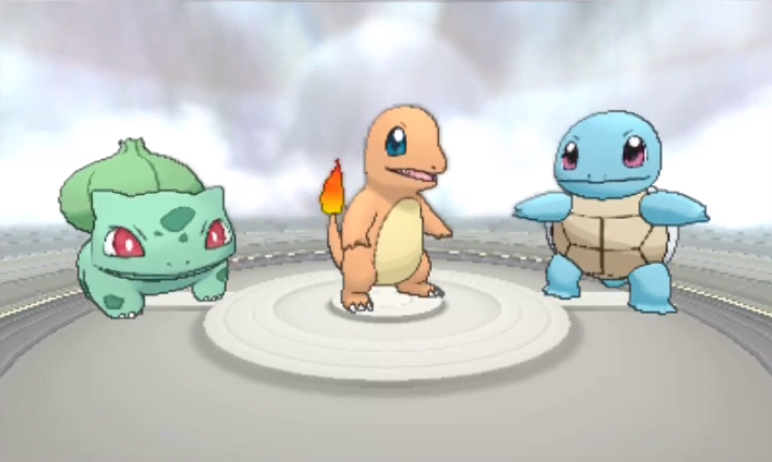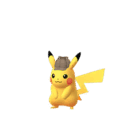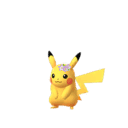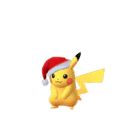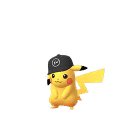[Updated] The Overuse of Kanto
Kanto’s been around since the beginning – so how much is it around these days? Spoilers – quite a lot.
Update: We’ve updated the article with how Kanto pervades even the Galar region in Pokémon Sword and Shield, as part of our review articles.
It was telling that, after a pre-release news reveal for the Pokémon Sword and Shield games, a lot of the comments were about the fact all the new Gigantamax forms belonged to Kanto Pokémon. And the comments were none too positive. Meowth became a longcat, Pikachu and Eevee became fat and fluffy respectively as tie-ins to Pokémon Let’s Go, Pikachu and Eevee!, and Butterfree and Charizard seemed to parallel Godzilla and Mothra in their new forms. Not one other form was shown for another generation Pokémon – not even one of the new generation eight Pokémon for which this pair of games introduces.
By itself it may not seem much to, say, a non-Pokémon consumer. Is it right for some fans to be frustrated? The best way to answer that is to review how much Kanto has shown up, particularly in the more recent years.
Kanto – the everpresent region
The Kanto region itself has directly, and fully, appeared in five generations out of seven completed thus far: the first four, and generation seven. Kanto was first revisited in Pokémon Gold and Silver, a game which allowed you to revisit the original region after you became the Champion and take on another eight Gyms. This was pretty welcomed at the time. While Kanto in this game was admittedly stripped down, it was miraculous that it was in the game at all, and we have Iwata to thank for that.
Generation three had remakes in Pokémon FireRed and LeafGreen. One weird aspect though was that Pokémon were unable to evolve outside of the original 151 Pokémon until you beat the Elite Four – so for instance, your Golbat could not become Crobat until then. This was a weird demand that only the original could be used that we’d see again later – and it was further forced by the restriction on trading with other generation three titles until completion of a late-game sidequest. At least you had more to explore with the addition of the Sevii Islands, an area never seen since.
Generation four brought another remake, this time in Pokémon HeartGold and SoulSilver. Unlike in Pokémon Gold and Silver it was fully realised with no stripping down, outside of Mt. Moon. Some may argue little of value was lost there at the expense of an area where you could watch Clefairy dance, though.
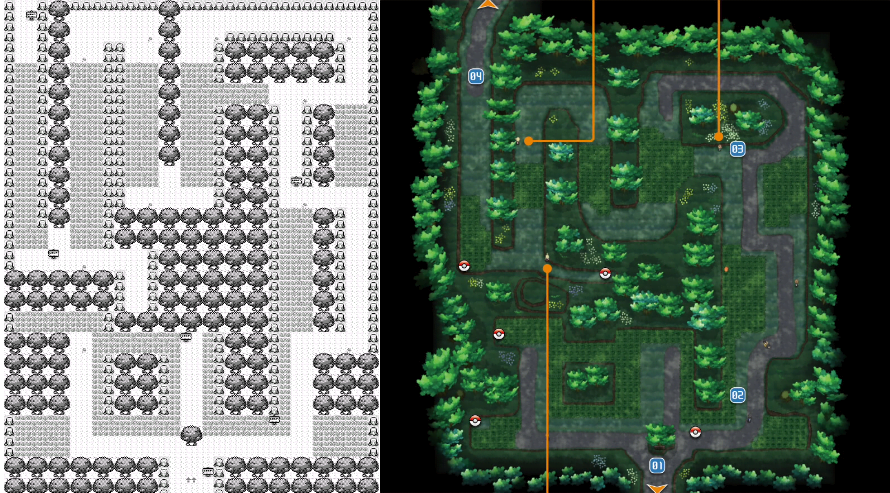
Generation five broke the trend, with Kanto as a region nowhere to be seen. The most we really see is the Driftveil Drawbridge, nicknamed in-game as the Charizard Bridge (despite being fairly bland and not looking like Charizard at all). However, there is no Kanto as a region to be seen here.
The same cannot be quite said of generation six, however. Sure, Kanto is not in the game, but one area is – Viridian Forest is essentially copy-pasted into Kalos as the early-game area Santalune Forest. Not only is the layout the same, but all the Pokémon in Viridian Forest in the first generation games can be found in Santalune too. There’s more aspects of Kanto besides the region itself, but we’ll cover that later.
Lastly, we have generation seven. Pokémon Let’s Go, Pikachu and Eevee (LGPE) is yet another remake, and one that remains very true to the original games. There’s not much different at all – in fact, even somewhat odd design choices like the annoying ledge around the Pokémon Centre in Fuchsia City remains. At least Gyms are different. It might make sense when the games were outright aimed to be a nostalgia piece, but sometimes some things can stand to be changed. That includes the Pokémon choice, but besides Meltan and Melmetal, you still couldn’t evolve your Tangela, Golbat or Rhydon into something better. Mega Evolutions for Kanto Pokémon were added in though…
Alola, Kanto?
Generation one has a large influence on more than just LGPE in generation seven. There’s a lot made about you coming from Kanto, with your mum also bringing over a Meowth from Kanto. This does parallel the large Japanese population (where Japan is represented by Kanto, Johto, Hoenn, and Sinnoh in the Pokémon world) living in Hawaii (Alola). That said… Japan is represented in the Pokémon world by more than just Kanto.

This does not appear to be the case in Alola though. All the Alolan forms (e.g. Alolan Meowth and Vulpix) revealed pre-release were of Pokémon in Kanto. Some fans hoped this was just a marketing thing, and we’d see others. However, it turned out only one more remained to be discovered, and it was Alolan Geodude’s line. Confusingly, while more Ultra Beasts were introduced in Pokémon Ultra Sun and Ultra Moon (USUM), we didn’t see any other Alolan forms.
Let’s not forget Alolan Oak (Samson Oak) too. The game doesn’t have the true original Professor, but it was unable to shy away from using his model with a tan and Hawaiian shirt slapped upon him. And while Red and Blue are not the only previous-gen characters to appear in the Battle Tree, they are the only ones with a special battle and introduction to them upon first arriving to the area. Only Looker and Anabel get special focus. Additionally, we have one of the new buildings in USUM featuring a replica of the Vermillion Gym puzzle – not a particularly ‘fun’ puzzle, but nonetheless it showed up.
Poké Ride was another feature in Alola. We’ve seen eight Pokémon in the game that you can ride, with one (Mantine) only usable in a minigame in USUM. Four of the remaining seven were Tauros, Lapras, Machamp, and Charizard – the latter not even found in the Alolan Dex. Every other generation had one representative at most. (Let’s also not forget two out of five rideable Pokémon in Kalos also were Kanto Pokémon.)
One could claim that there is one exception in Malie City, which had architecture which matched that found in Johto. But even this city has a Kanto reference! Inside Malie Garden is a replica of Nugget Bridge. You can even battle five trainers upon it later in the game, and win a (Big) Nugget from a sixth Trainer who challenges you afterwards, just like in the Kanto games. The lake in the garden also looks like a generation one Pokémon (Gyarados), and Johto has no Trainer representation in the Battle Tree.
It’s clear that Kanto gets most of the highlights in Alola.
Kanto in Galar
We’ll cover Gigantamax and Galarian forms later, but there’s some other aspects Kanto snuck into Galar.
Let’s address the most notable Kanto pandering: Leon, the region’s Champion, parades his main Pokémon in Charizard. And the game does not stop reminding you about Charizard.
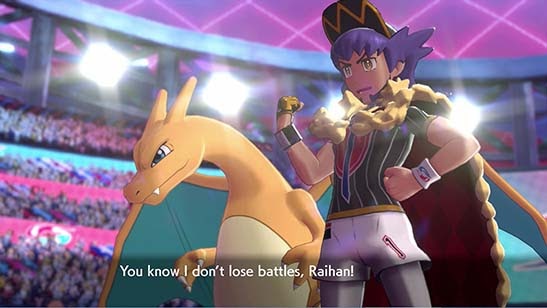
There has never been a Champion who has made it so abundantly clear who their best Pokémon is. You see Lance use Dragonite a few times in Pokémon Gold and Silver, for instance, but he doesn’t mention it otherwise. Leon on the other hand shows up throughout the story from beginning to end. Other characters will keep referencing the Charizard as well. Instead of making this an opportunity to showcase a brand new Pokémon native to Galar, we have the popular Kanto Starter take centre stage. Tied in with the repetition that Leon is the unbeatable and undefeated Champion, it’s clear they’re trying to suggest at least part of the reason is because of Charizard, who even shows up in the game’s first cinematic.
This bias for Kanto Pokémon extends beyond Charizard as well. Early on in the game, you can visit Leon’s room, as well as Hop’s room (Hop being Leon’s brother and your rival). In the room you can see posters, showing three Kanto Pokémon. Examining these posters informs you that these are the three most popular Pokémon in Galar.
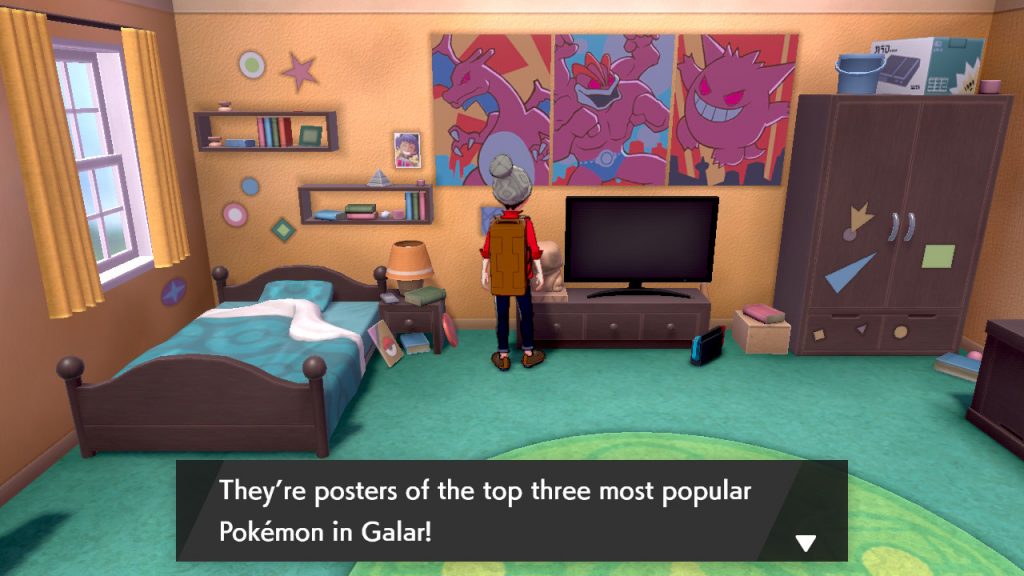
Again – missed here is an opportunity to showcase brand new Pokémon to players. Why not use the likes of the Galar Starter Pokémon? Or maybe focus on other Pokémon used in marketing, such as Yamper? If it was intended to showcase strong, meta-relevant Pokémon, then Duraludon and Dragapult could have been used. Instead we got three Kanto Pokémon.
Cooking Curry is a new feature in Pokémon Sword and Shield. A throwaway comment an NPC makes is that Curry is also popular in Kanto. While curry is popular in Japan, Kanto is not the only Japanese-based region. There’s Hoenn, Johto, and Sinnoh too!
Lastly, this piece of dialogue stuck out towards the end of the game. An NPC states that both Kantonian and Galarian people like to queue. But once again, what is so different about Kantonians compared to any other Japanese-based region? Furthermore, where in Pokémon game canon has this been seen? You never have to queue in the game. Rather, referencing Unova here would have made more sense. In Castelia City, you can see NPCs line up for Casteliacones, to the extent that you can only join the queue on Tuesdays to be able to purchase one. Then again, there’s no sign of a queue around this NPC.
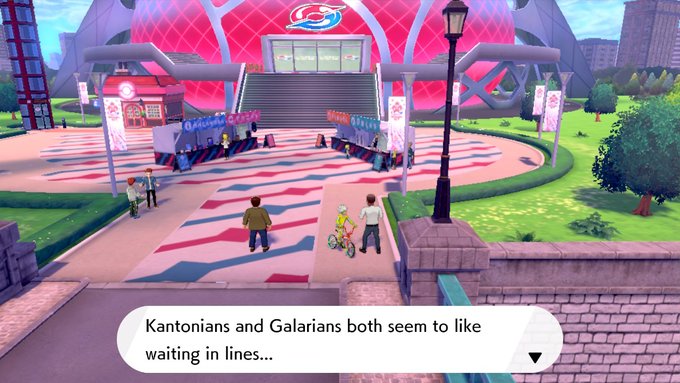
There is the occasional reference to other regions in Galar, to be fair. But these ones for Kanto stick out as unnecessary and contrived.
Mega Kantolutions
While not all Mega Evolutions are limited to Kanto, they still dominate the list. In Pokémon X and Y, there were 28 Mega Evolutions introduced, including doubles. 12 of those belonged to Kanto Pokémon, with Charizard and Mewtwo benefitting from having two separate Mega Evolutions. It was less one-sided with the Pokémon Omega Ruby and Alpha Sapphire additions (3 out of 20 belonged to Kanto Pokémon; and that’s not including Primal Reversions). Nonetheless, that’s 15 Mega Evolutions (or Primal Reversions) dedicated to one generation out of six, versus 33 for the remaining five generations. The ratio here is lopsided.

It is worth pointing out that really it was one generation versus four, because generation six did not have any Mega Evolutions… despite being the generation that introduced the mechanic. It did have a free choice of a Kanto Starter that could make use of the mechanic though, which was unfair to the Delphox/Greninja/Chesnaught trio. Eventually an ‘Ash Greninja’ was released which… sort of Mega Evolved, but it was only available via event.
Z-Moves, Hats and Costumes
But that’s not all! Alola’s gimmick in Z-Moves included a handful – seventeen, to be exact – unique Z-Moves specific to a species of Pokémon. 11 were for Alolan Pokémon, including various Legendaries and the three Starters. The remaining six all went to Kanto Pokémon: Pikachu twice, Alolan Raichu (so three for the one species line), Eevee, Snorlax, and Mew. Johto, Hoenn, Sinnoh, Unova, and Kalos has zero unique representation here.
The second of these Pikachu unique Z-Moves was reserved for special forms of Pikachu released with Ash’s hat. Arguably each hat represented a different region, or leastways the hat Ash wore while travelling in said region. But instead of the hat appearing on Pokémon of that region, it always went to Pikachu.
Pikachu (and Pichu and Raichu) wearing various hats has also plagued Pokémon GO. There are nine different kinds of hats attached to Pikachu, plus a flower crown version, and a Halloween costumed Pikachu (pretending to be a Mimikyu… who is pretending to be Pikachu in the first place! But of course Mimikyu disguises itself as the most popular Kanto Pokémon). So including original, vanilla Pikachu, that’s 12 versions of the franchise’s mascot. Besides it? We have Squirtle with glasses, Eevee with a flower crown, and Squirtle, Charmander, and Bulbasaur with Halloween costumes. All alternate forms belong to Kanto Pokémon only. This may be broken during Christmas – some 2.5 years after GO first released – as a new Stantler form may be released, but until then, it’s just generation one. We may never see the heavily fan requested ‘Party Hat Wurmple’ show up.
Costumes also featured in Contests in Pokémon Omega Ruby and Alpha Sapphire. Pikachu came with five of them, and that was it – no other Pokémon has a unique costume that would grant you bonus points. Libre Pikachu then moved out of contests and into Pokkén Tournament, the spinoff fighter title for the Wii U and later Nintendo Switch. Hawlucha may have seemed a natural fit as a wrestling Pokémon for the title, or even Incineroar, but alas; two Pikachu were chosen instead, as were two versions of Mewtwo. At most the game has 23 fighters (less if using the Wii U or Arcade versions), and 8 of them are generation one Pokémon. That’s over a third of the roster.
Galarian forms and Gigantamax
This brings us to generation eight Pokémon. We have Galar forms, and Gigantamax forms. By the numbers, we have:
- 13 Galarian forms of previous generation Pokémon. Of these, 6 (46%) are of Kanto Pokémon (Ponyta, Rapidash, Farfetch’d, Weezing, Meowth, and Mr. Mime). The second highest representation is Unova, with 4.
- 6 Galarian evolutions exist (i.e. evolutions for previous generation Pokémon). Half of these belong to Kanto Pokémon (Sirfetch’d, Mr. Rime, and Perrserker).
- 26 Gigantamax forms exist (albeit some not yet released). Of these, 10 (38%) belong to Kanto Pokémon (Snorlax, Charizard, Pikachu, Eevee, Meowth, Lapras, Kingler, Gengar, Machamp, and Butterfree). 14 belong to generation eight, or Galar, Pokémon, but that means out of all the previous generation Pokémon, only two do not hail from Kanto (Garbodor and Melmetal).

We can nitpick further as well. Charizard and Butterfree resemble Godzilla and Mothra respectively, despite Tyranitar being a far more Godzilla-like Pokémon, and there being several moth Pokémon (e.g. Mothim, Volcarona, and the brand-new Frosmoth) who would better fit the Mothra comparison than a butterfly Pokémon.
It turns out that close to half (47%) of all alternate forms and evolutions, encompassing Alolan Forms, Mega Evolutions, Galarian Forms/Evolutions, and Gigantamax forms, are made up by Kanto Pokémon. When Kanto Pokémon by Pokédex numbers will make up less than 18% of the National Dex, it’s a very skewed representation.
Johto’s 20th anniversary has occurred this year as well. While the heavily influence of Kanto on the Alola games can be chalked up to it being released as a celebration of the 20th anniversary of Pokémon, we’re seeing zero sign of this repeating with some love for the second generation Pokémon in this year’s games.
At least it does not spread to the make-up of the Galar Dex itself, where we can see Kanto sits in the middle of region representation.
Counterpoints
Not all Kanto Pokémon are created equal, of course. As evident above, Pikachu, Eevee, and the Kanto Starters get most of the highlights. You don’t see the same treatment for all 151 Kanto Pokémon – for instance, there’s been no Mega Evolution or the such for Starmie, or an Alolan form for Growlithe. The Galar Dex is also not dominated by Kanto Pokémon by any means. That said, it’s very easy to say that Farfetch’d was a rather forgettable and relatively unpopular Pokémon – why does it get a new form and evolution in Galar, and not, say, Dunsparce or Qwilfish? Overall, when it comes to bonus or special treatment, such as by getting a new form or costume, or representation in spinoff titles, it will be Kanto Pokémon winning the role.
It come down to a lot of marketability and popularity. Charizard came in as the most popular Pokémon in an IGN poll some years back, and earlier this year it won again in a poll conducted on Reddit. If you ever wonder why it has two Mega Evolutions, is the only Kanto Starter to have a Gigantamax form, is showcased as the choice Pokémon of Champion Leon, and even has a bridge named after it in the region of Unova due to its ‘beauty and elegance’, then look no further than those results. It’s a similar tale with other Kanto Pokémon. Pikachu remains the top mascot, and Eevee is enjoying a lot of the spotlight lately too.
Evidence of this can be seen outside of the games too. The three most seen or focused-on Pokémon in the Detective Pikachu movie, Pikachu, Psyduck, and Mewtwo, all hail from Kanto. Mr. Mime, Charizard, Bulbasaur, Cubone, Ditto and Gyarados also had a decent amount of screentime; while so too did e.g. Aipom or Torterra, the weight has been with Kanto. They are generally the most recognisable sets of Pokémon, so when appealing to a more casual consumer, they’re the go-to choice.
And Kanto sells. LGPE has had very convincing sales numbers of over 11 million since they released under a year ago, and for a fairly new platform in the Nintendo Switch as well. They’ve outsold the Pokémon Omega Ruby and Alpha Sapphire in their first year to boot. For games that were rather stripped down (no Hold Items or Abilities, no Sevii Islands, little in the way of post-game content), they’ve shown that there’s more than enough customers for generation one. That’s no bad thing in itself, but it does appear to come at the cost of less noteworthy Pokémon from other generations, outside of a few popular exceptions (e.g. Lucario), to get ignored time and time again. Meanwhile, other fan favourites such as Garchomp were removed from the game entirely. As long as Kanto continues to sell, it may just have to be a fact that we’ll have to get used to – Kanto is here to stay.
Edited by Aldo, ddrox13, Mercury, Rivvon, and Sheep.
